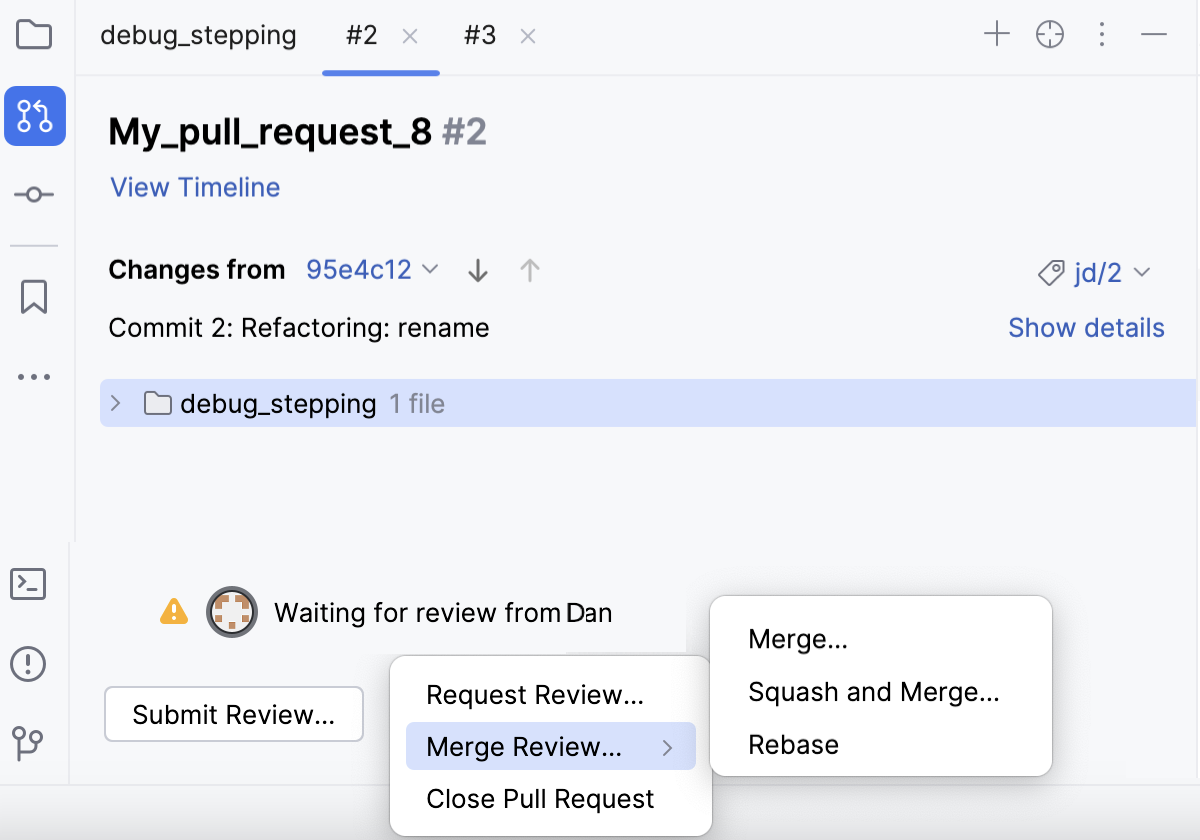Work with GitHub pull requests
Pull requests are used in open-source projects or in some corporate workflows to manage changes from contributors and to initiate code review before such changes are merged.
By creating a pull request, you tell others about the changes you want to push to the original repository, so that the maintainers of that repository can review your changes, discuss them, and integrate them into the base branch.
Create a pull request
In the main menu, go to . The Pull Requests tool window opens with a pull request draft.
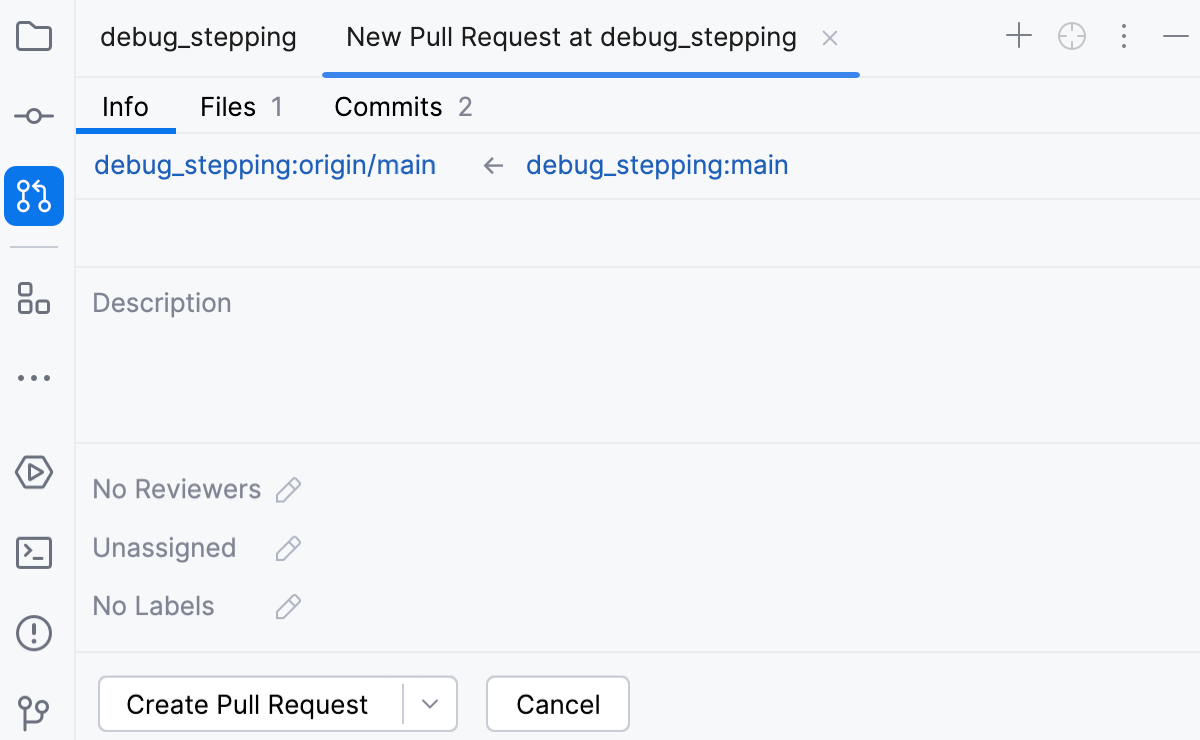
Alternatively, open the Pull Requests tool window and click
Create Pull Request in the top-right corner.

In the Info tab, the repository on the left is the base repository that will receive the updates.
The repository on the right is the head repository with the changes that will be added to the base repository.
Click the name of the base repository on the left. In the popup that opens, specify the branch to which you want to apply your changes.
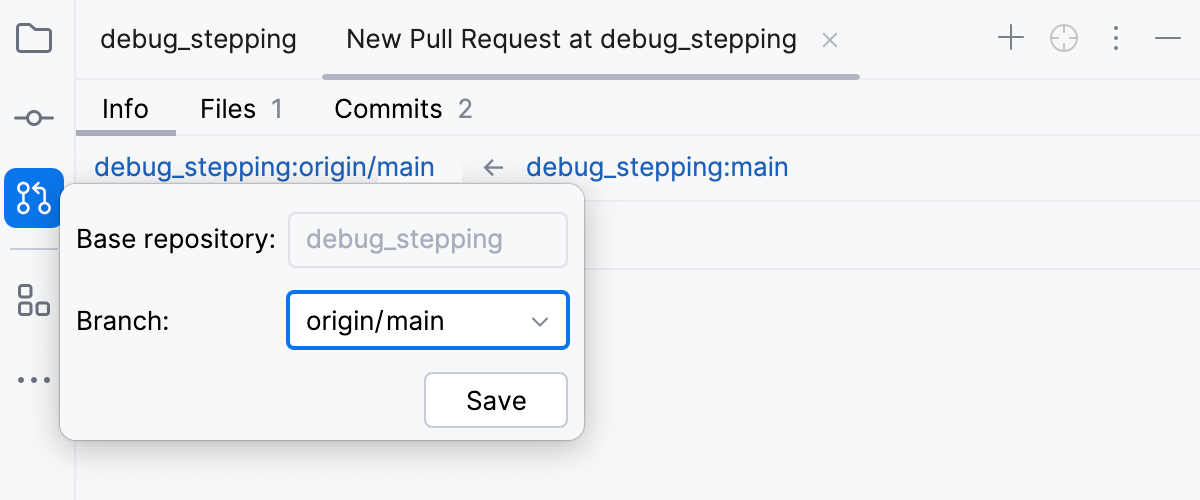
Click the name of the head repository on the right. In the popup that opens, specify the branch that contains the changes you want to apply.
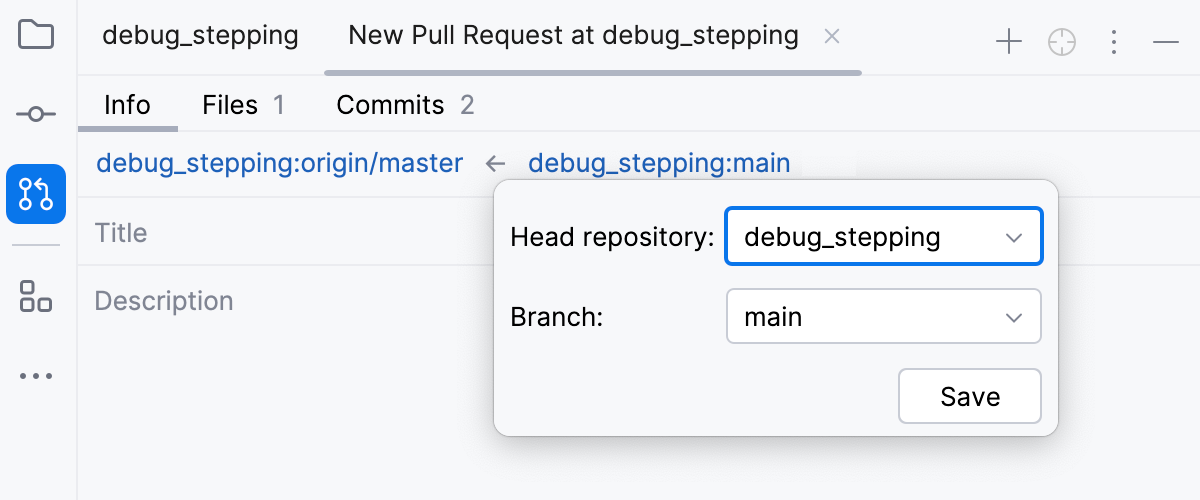
If you have a project that uses multiple remote repositories, you can change the head repository in this popup as well.
Specify the name for your pull request in the Title field, and, optionally, provide a description of the changes to be applied through your request.
In the Files tab, you can review the changes you are about to submit. Double-click the name of any file to open the Diff view.
In the Commits tab, review the list of commits that will be included in the pull request.
To view the details of a commit, click it to open the Diff view.

Optionally, add reviewers, assign your pull request to someone, or add a label to your pull request.
Click Create Pull Request.
If you are not yet ready to push your pull request, you can save it as a draft.
Click
next to the Create Pull Request button.
In the menu that opens, select Create Draft Pull Request.
Your pull request will appear in the GitHub repository as a draft. You can come back to it later by choosing in the main menu.
If you have a pull_request_template.md file, WebStorm should add the template description to your pull requests. For more information about templates, refer to GitHub documentation.
Manage incoming pull requests
If you are a project maintainer, and you have a GitHub remote configured for your project, you can view and manage incoming pull requests directly from WebStorm.
To view incoming pull requests, select in the main menu.
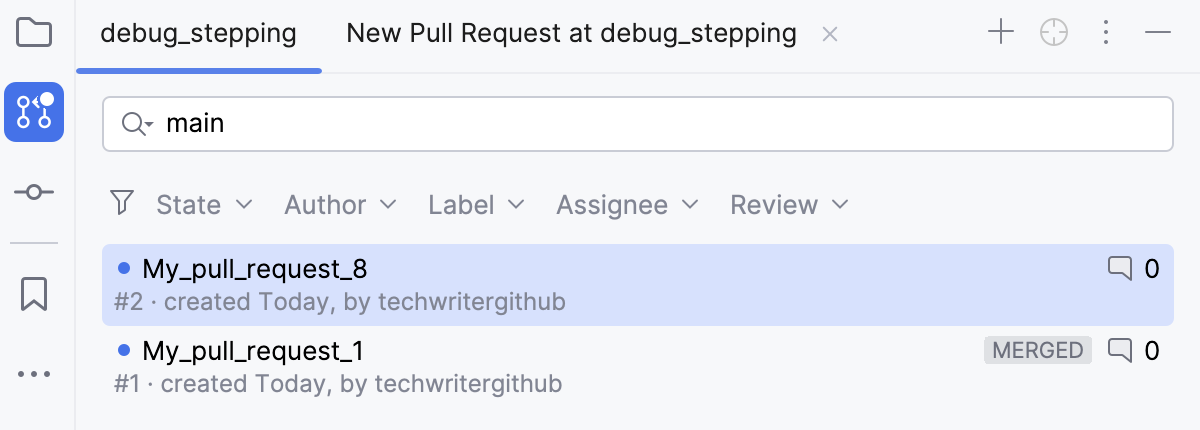
Use the Pull Requests tool window to:
Filter requests by state, author, label, assignee, and review status.
Jump to a pull request on GitHub: select a pull request and choose Open Pull Request in Browser from the context menu.
View diff between the suggested changes and the base revision: click the name of a pull request, select a file, and double-click it or press Ctrl+D.
Create a local branch based on incoming changes: open a pull request, click the branch with incoming changes, and choose Checkout 'branch name' in the context menu.
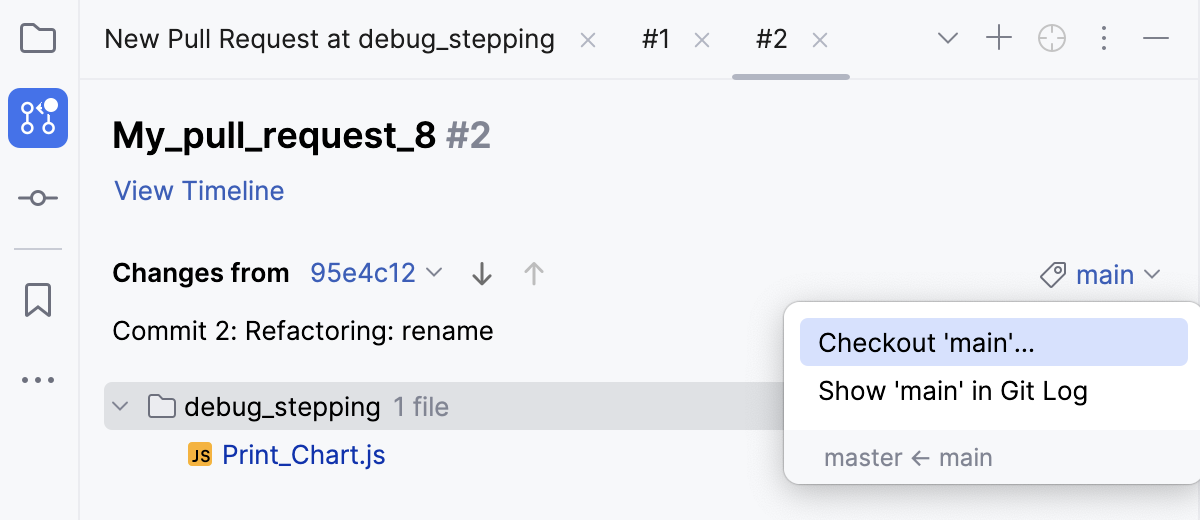
Investigate branch-related changes in the Log tab of the Git tool window: open a pull request, click the branch with incoming changes, and choose Show 'branch name' in Git Log in the context menu.
This will help you navigate the code related to this pull request, make sure the project builds and the tests pass.
Review a pull request
When there are changes that require your attention, a white dot marks the Pull Requests tool window and the unseen pull requests are marked with blue dots.
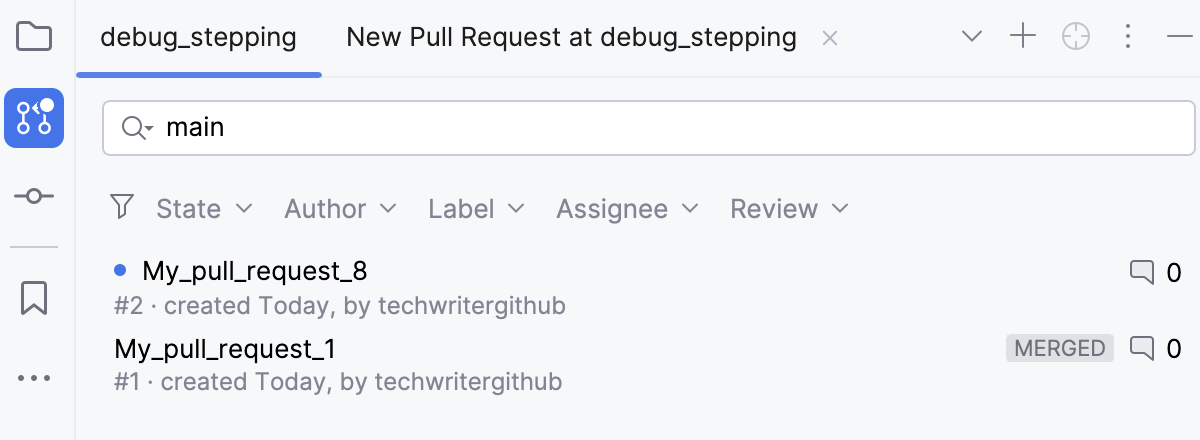
In the main menu, go to .
In the list of pull requests, select the one you want to work with and double-click it.
WebStorm opens an overview of the selected pull request.
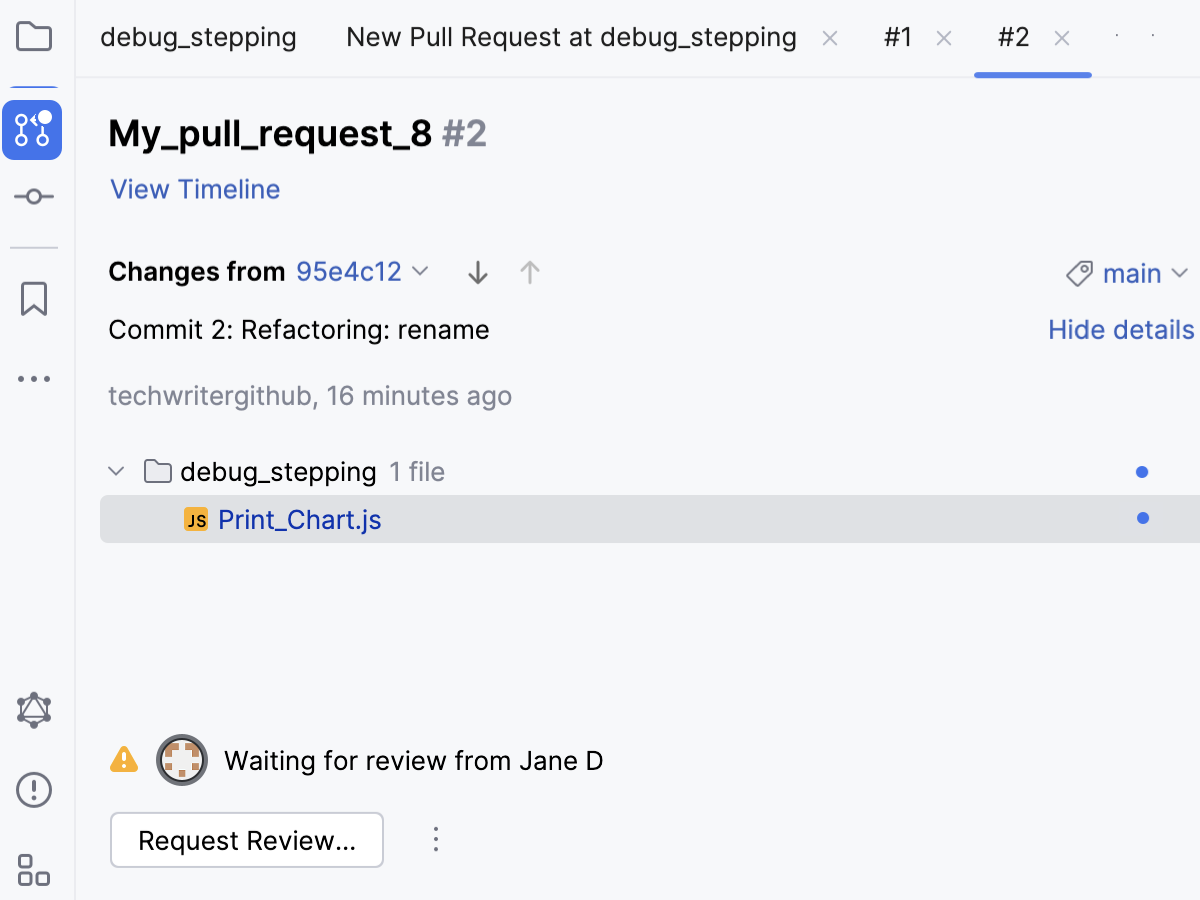
Next to the title, there is the pull request number. Click it if you want to open the pull request on GitHub.
Click the View Timeline button to open the pull request timeline.
To filter the list of changed files, select the commit you want to investigate in Changes from.
Right-click any file to open the context menu for this file.
In case a reviewer has left any comments or suggestions, there is a counter with the number of comments in the list of files.
Click the branch with incoming changes, and choose Checkout 'branch name' in the context menu to start the review mode.

Select the file you want to investigate, right-click it and select Jump to Source from the context menu.
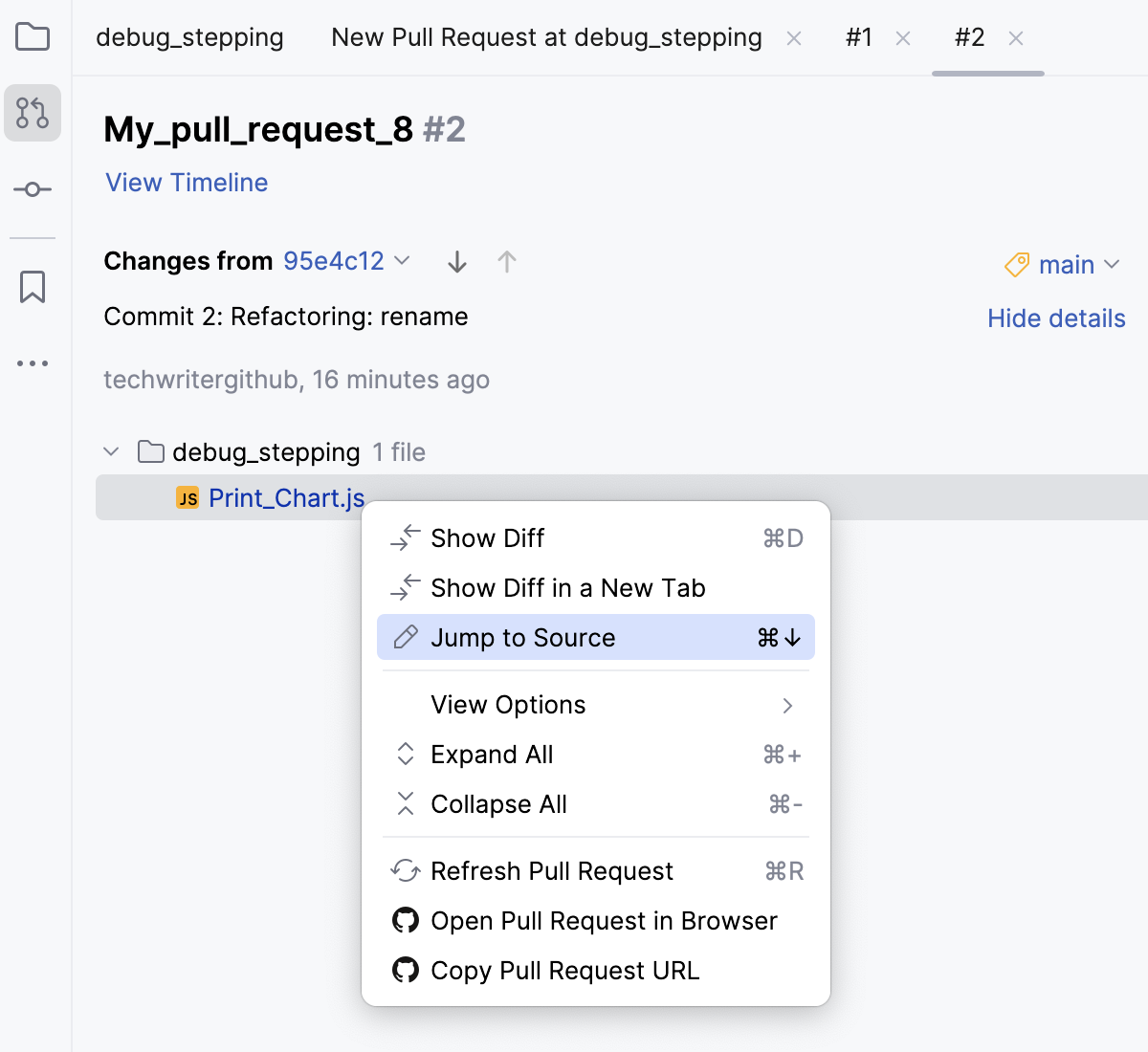
In the file that opens, pink markers in the gutter indicate the changes that are available for review. Clicking these markers reveals a popup displaying the original code.

Hover over the gutter and click
or press Ctrl+Shift+X to leave a comment.

For suggestions, add your version of the code wrapped in a Markdown code block with the
suggestionspecified as a language.```suggestion Your suggestion for this code line ```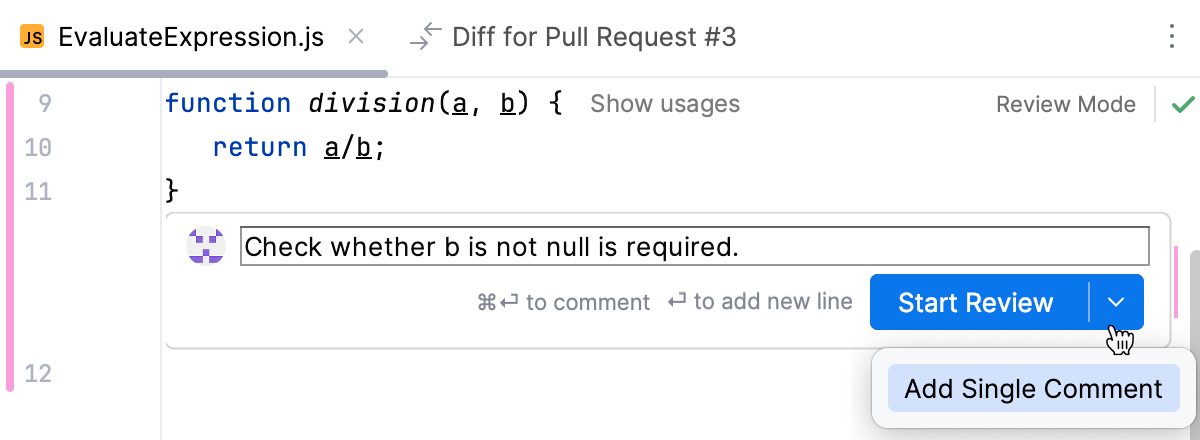
Select Add Single Comment to post a comment immediately and get other reviewers notified.
Select Start Review to add multiple comments.
Before you submit your review, your comments are marked Pending, and you can edit or delete them.
To place a high-level comment on a pull request as a whole, open the timeline view of this pull request.
When you are ready to finish the review, click Submit on the editor toolbar or in the pull request overview.

Alternatively, open the branches popup and click Submit Review.
Select one of the possible outcomes:
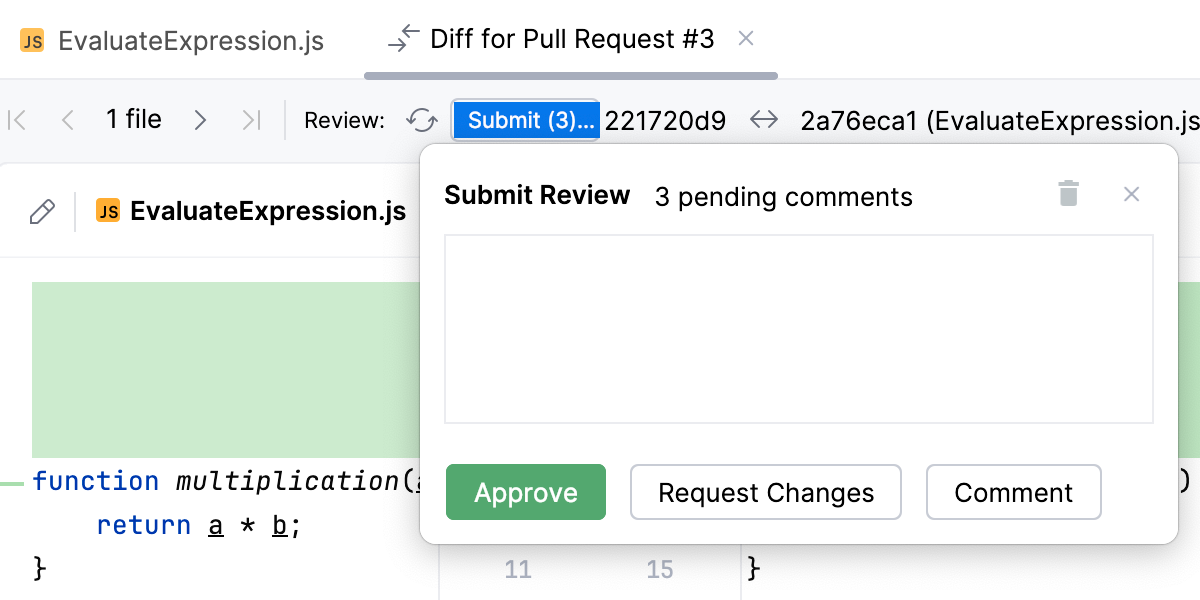
Approve: to approve merging changes.
Request changes: to submit feedback, a pull request author must apply the suggested changes before merging.
Comment: to submit a comment without an approval.
View and apply the suggested changes
If the maintainers of the original repository left comments or made suggestions with regard to your changes, you can view and apply them directly from WebStorm.
In the main menu, go to .
In the list of pull requests, select the one you want to work with and double-click it.
WebStorm opens an overview of the selected pull request.
Double-click a file to view the suggested changes and comments.
You can resolve a comment, reply to it, or leave your reaction.

If the reviewer has left a suggestion, you will see the diff between your code and suggested one and can either Apply locally (applies a patch to the working copy) or Commit (opens a commit message pop-up).
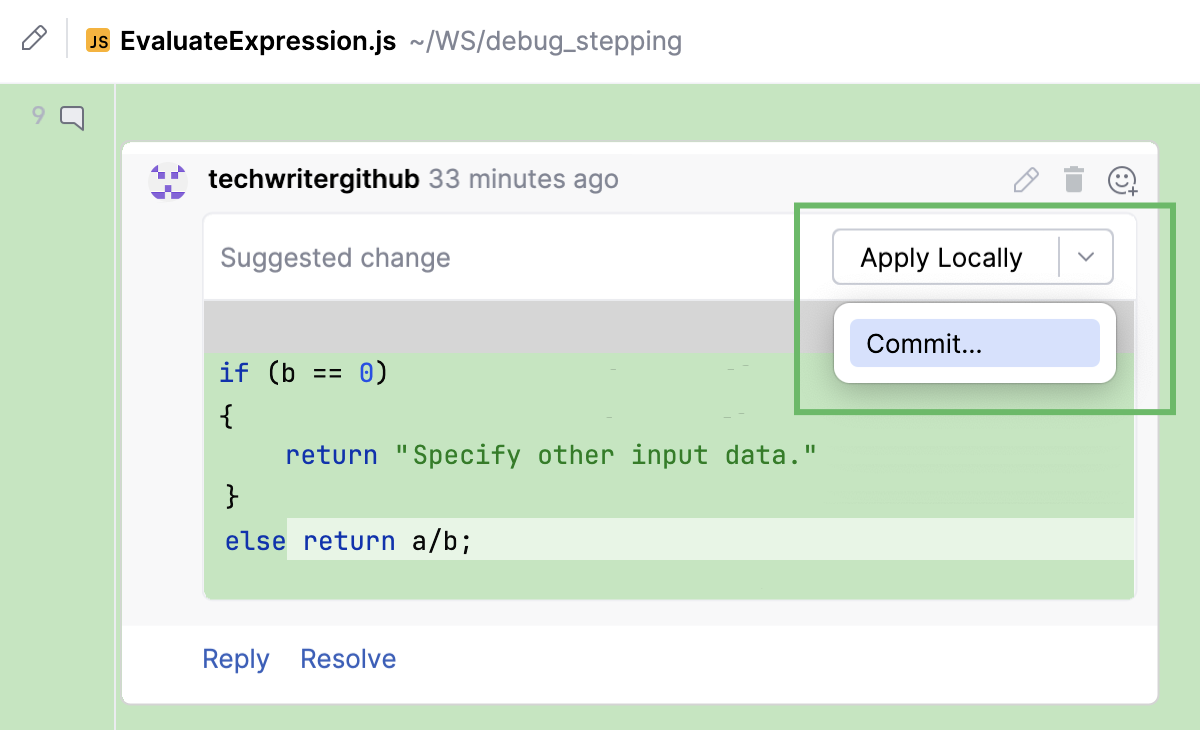
After you finished working on the pull request, you can re-request review, merge pull request or close it.
Merge or close a pull request
After submitting your review and solving all the issues, you can merge or close the pull request.
In the main menu, go to .
In the list of pull requests, select the one you want to work with and double-click it.
At the bottom of the overview, there is a button with merge options that differ depending on the stage of the review process.
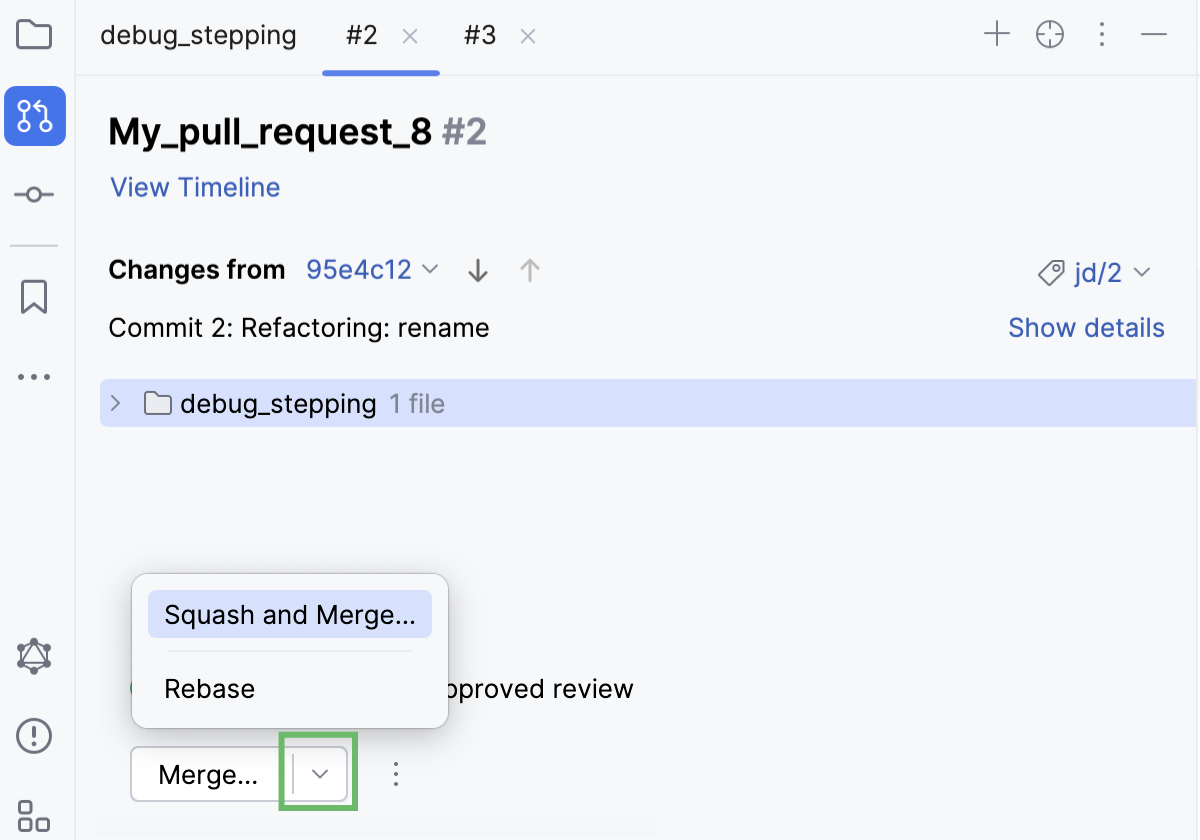
If you have approved the updates after your review, you can merge the pull request by clicking Merge.
For more merge options, click
and select Squash and Merge to squash the commits with your changes into one before merging them or Rebase to rebase the commits from the pull request branch and add them to the base branch.
Click
More and select Request Review if you need another opinion on this pull request or Close Pull Request if you do not want to merge it.
If you are ready to merge the pull request without submitting your review, in the pull request overview, click
and select Merge, Squash and Merge, or Rebase.
